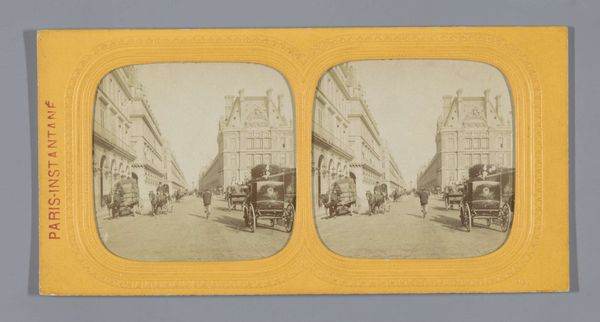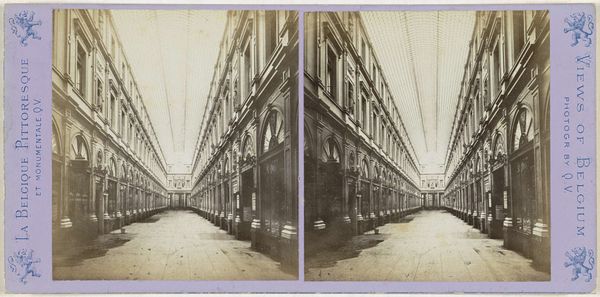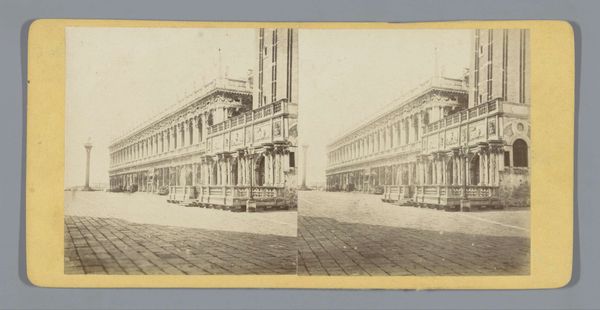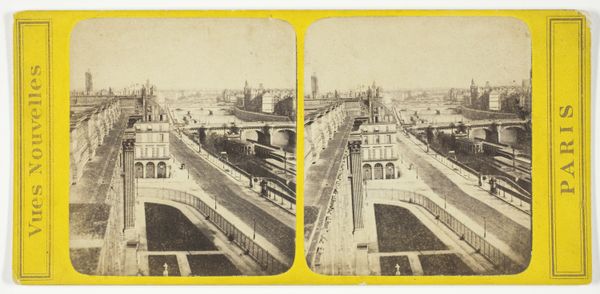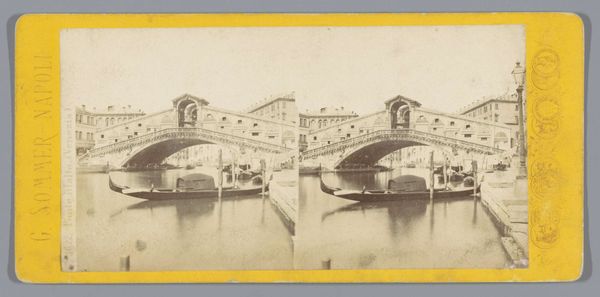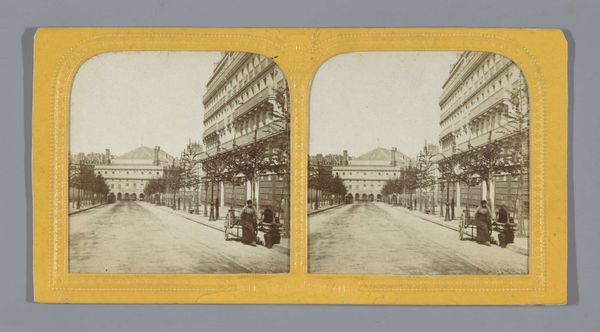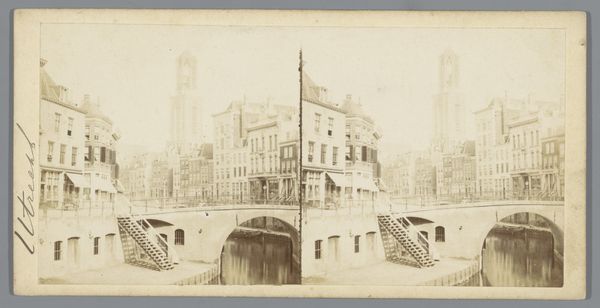
Dimensions: height 85 mm, width 170 mm
Copyright: Rijks Museum: Open Domain
Curator: Here we have "Brug der Zuchten te Venetië," or the Bridge of Sighs in Venice, a gelatin silver print likely made between 1850 and 1880, by the studio of C. Coen & Figlio. Editor: Immediately, I am struck by the photograph’s somber mood. The narrow canal, the imposing architecture… it feels almost claustrophobic, despite being an outdoor scene. Curator: Notice the surface quality—the slight blurring around the edges speaks to the alchemical processes at play within early photography. The materiality gives it a sense of authenticity. This gelatin silver process, and its potential hand-colouring, speaks of experimentation in commercial photography during the period. Editor: The "Bridge of Sighs" itself carries such loaded symbolism. Traditionally, it was the last view prisoners had before being led to their cells. This idea that it depicts a liminal space between freedom and captivity weighs heavily in its impact. The name alone suggests sadness. Curator: Absolutely, and if you look closer at the very precise capture of the details of the bridge itself, there is the potential for large scale manufacture and reproduction of popular cultural symbols. This photo would have been acquired as a souvenir, speaking to the booming tourism industry feeding demand in the era. Editor: But within that reproduction, there's still the enduring romantic allure. The architecture of Venice itself has always signified a certain blend of beauty and decay, which resonates with this specific bridge's melancholic tale. Think about it: a city built on water, prone to erosion and floods, filled with labyrinthine streets and waterways—the perfect stage for stories of lost souls and thwarted loves. Curator: True. Yet, this widespread production alters its intrinsic symbolic meaning, turning into just another consumable item… almost emptying it. The photograph itself shifts from being just an image of symbolic weight to a mass produced, portable token. Editor: Even so, the emotional impact for a contemporary viewer remains powerful. The composition guides your eye right towards the vanishing point of the canal. The bridge then becomes an entry point to reflect on feelings of loss, confinement, the fleeting nature of beauty… Curator: Perhaps it is then in this contradiction—the manufactured object as an empty carrier, but simultaneously, the bearer of encoded meaning—that photography reveals it complex relation to material and emotional production. Editor: I think you’ve hit on something there, actually. It captures a moment, mass produces it and packages a souvenir tinged with both beauty and despair. Food for thought!
Comments
No comments
Be the first to comment and join the conversation on the ultimate creative platform.

